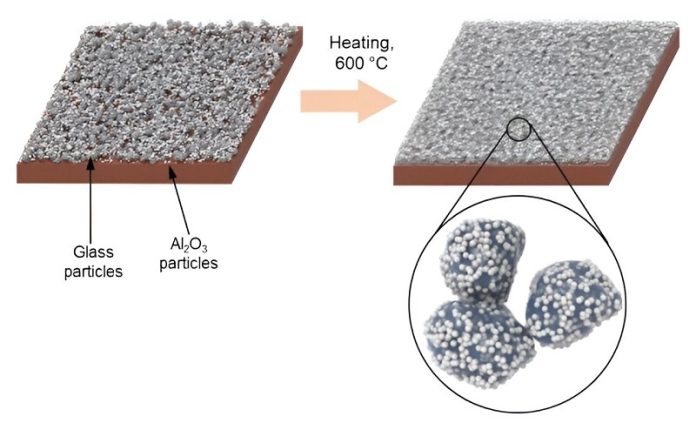
Researchers at the University of Maryland have developed a groundbreaking “cooling glass” to fight against rising global temperatures.
This new technology, which works without electricity, can significantly reduce indoor heat by using the coldness of outer space.
The team, led by Distinguished University Professor Liangbing Hu, detailed their invention in a recent issue of the journal Science.
This cooling glass isn’t just any ordinary glass. It’s a special microporous glass coating that can lower temperatures by 3.5°C around midday. For a medium-sized apartment building, this could mean a 10% reduction in yearly carbon emissions.
The secret to this glass lies in two unique features. First, it’s incredibly good at reflecting solar radiation, which prevents buildings from soaking up too much heat. But even more fascinating is its ability to send heat back into space.
This process, known as “radiative cooling,” essentially uses space as a giant heat sink. Buildings with this glass can release heat into the vast, icy universe, where temperatures hover around -270°C.
This kind of heat emission is much more powerful than the natural cooling Earth experiences, especially on clear nights.
Assistant Research Scientist Xinpeng Zhao, the first author of the study, believes this technology is a game-changer.
It not only simplifies how we keep buildings cool but also contributes significantly to energy efficiency and environmental care.
Unlike other cooling coatings tried before, this UMD-developed glass is super tough. It can handle water, UV rays, dirt, even flames, and can withstand temperatures up to 1,000°C. This makes it versatile, as it can be applied to various surfaces like tiles, bricks, and metal, paving the way for widespread use.
The researchers chose glass particles of a specific size to make this coating. These particles are key to balancing the emission of infrared heat and reflecting sunlight, ensuring the glass’s cooling properties.
This choice also avoids the use of polymers, enhancing the glass’s durability when used outdoors.
Professor Liangbing Hu points out that this cooling glass is more than just a new material. In the context of global efforts to reduce energy consumption and fight climate change, it’s a significant step forward.
Considering recent reports about record-high temperatures, such innovations are crucial. By reducing reliance on air conditioning, this technology can help us use less energy and lower our carbon footprint.
The study also involved mechanical engineering Professor Jelena Srebric and Professor Zongfu Yu from the Department of Electrical and Computer Engineering at the University of Wisconsin-Madison. They brought in their expertise on building CO2 savings and structure design, respectively.
The team is now focused on further testing and finding practical applications for their cooling glass. They are optimistic about its potential for commercial use and have already established a startup, CeraCool, to scale up and market this innovative product.
In summary, this new cooling glass from the University of Maryland researchers is not just a scientific achievement; it’s a promising step towards a cooler, more sustainable future, showing how technology can play a vital role in tackling climate change.
Follow us on Twitter for more articles about this topic.



